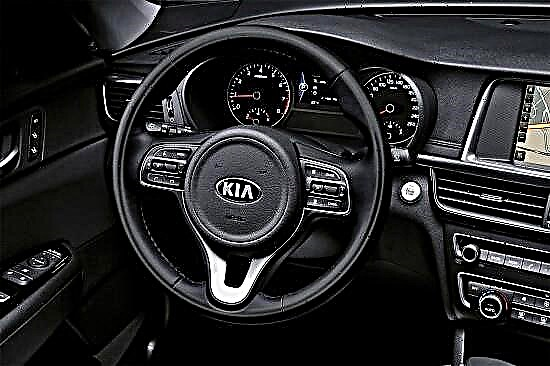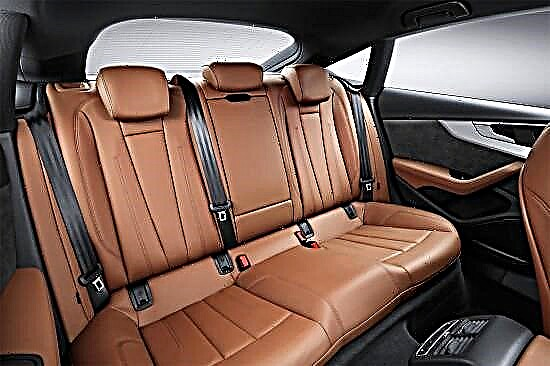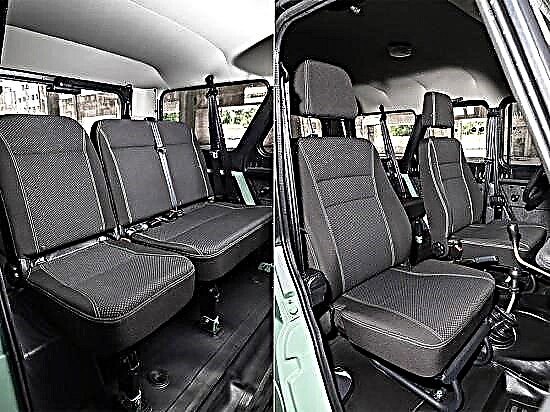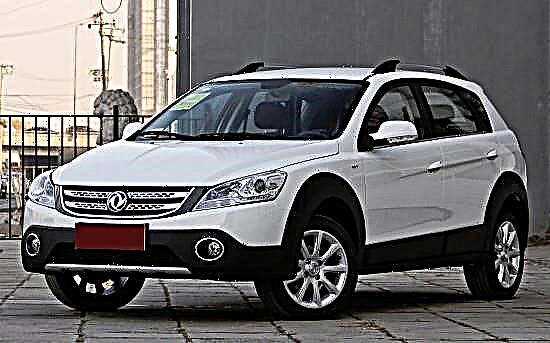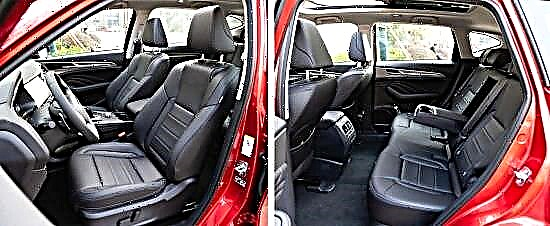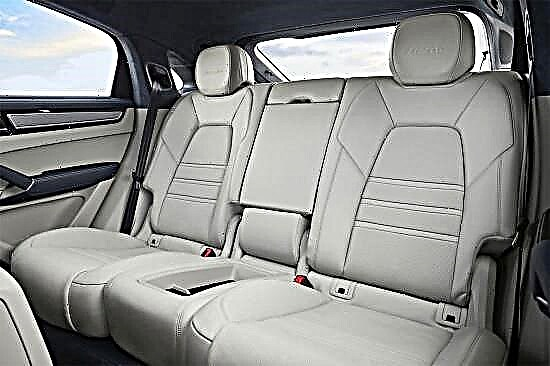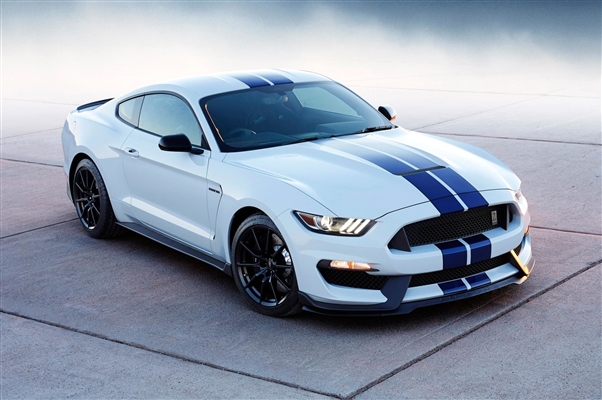Ratings of cars and auto products
Reviews, comparisons & tips for motorists
The change of generations in the automotive industry is a natural and irreversible process. It also applies to the domestic auto industry. The "ninth" series successfully rested in the Bose, it was replaced by Priora, but this bestseller has not been released since last year. And West's successor has not yet managed to become such. Nonetheless, the Priora still has a huge fan following, including those planning to buy their first car. The reason is trivial - cost. But is this morally obsolete car really that bad? And is it worth overpaying for a modern appearance and comfort? Let's try to figure it out.
Technical features of the models
For comparison, we chose copies with the same engines and transmission (106-horsepower 1.6-liter power unit and manual transmission).
| Vesta | Priora | |
| Build country | Russia | Russia |
| Fuel type used | AI 92/95 | AI 95 |
| The volume of the power unit, l. | 1,598 | 1,598 |
| Power, hp from. | 106 | 106 |
| Max cr. moment, Nm at rpm | 148/4200 | 148/4200 |
| Luggage compartment volume, l. | 480 | 360 |
| Curb weight, t. | 1,23 | 1,19 |
| Length, cm. | 441 | 424 |
| Height, cm. | 150 | 144 |
| Wheelbase, see. | 264 | 249 |
| Clearance, see | 17,8 | 16,5 |
| Tire size | 185 / 65R15 | 185 / 65R14 |
The dimensions and weight of the Priora are less than that of Vesta, the same can be said about the ground clearance, wheelbase, and trunk volume. In a word, analyzing the technical characteristics of the models, we can conclude that the successor was not created on the old platform. Whether this is so, will help identify a comparison of other important parameters, which we will now do.
Appearance
With regard to the exterior, there are no reasons for equality - Vesta definitely wins in most indicators. This is a modern car with the appearance of a ten-year-old foreign car, with a slanted head optics unit, an aggressive false radiator grille, a large air intake and a sloping bonnet line. And the main decorative detail that contributes to the recognition of the sedan is the chrome edging that forms the torn letter X.
The profile view is no less impressive: the same x-shaped embossings at the front and rear make the body unique, although in the case of dents, it will be extremely difficult to restore the geometry of the damaged part. Solid discs complete the look.
Lada Vesta
The poop also looks very stylish. Above and below there are protrusions that add volume, the sloping lanterns look quite harmonious, and the rather large stamped LADA inscription is recognizable from afar.
Unlike Vesta, Priora looks clearly outdated. Yes, she has little in common with the “nine”, but there is obvious plagiarism in relation to the “Koreans” and “Japanese” of the early 2000s (look, for example, at the same Lancer 9).
Perhaps the only attraction is the wavy grille of the radiator and air intake. Convex optics look archaic, the front bumper is not visible at all, and the fog lamp block is hardly able to attract anyone's attention.
From the side, the car looks even more impersonal and old-fashioned, however, as well as from the back - nothing memorable.
Salon and trunk
Restyling of Lada Priora has little effect on the exterior, but the car interior has become more modern and comfortable. The dashboard was replaced with a new one, a large touchscreen appeared on the center console, which, in turn, became more saturated with controls. However, the interior remained recognizable - the same dashboard, the same steering wheel, the same manual transmission lever. Ergonomics flaws have not disappeared anywhere. The build quality and upholstery materials remained at the same level.
Salon Vesta in this respect is fundamentally different - both in general style, and in the design of individual parts, and in ergonomics. The display of the multimedia system here looks organic and does not seem like a foreign element, as in the Priora.
Salon Lada Vesta SW Cross
The dashboard looks very impressive, and not at the expense of information content. The driver's seat is profiled so well that many expensive foreign cars can envy him. The rear space is quite enough for three adult passengers, the trunk volume is not a record, but quite acceptable, especially in comparison with the Lada Priora.
In general, in the salon, questions about which is better, Vesta or Priora, a priori do not arise - such a pun is obtained.
Engines and transmissions
Both Vesta and Priora have two power units in the engine lineup. But if the "old woman" has either an eight-valve 1.6-liter engine producing modest 87 "horses", or an engine of the same volume, but with 16 valves, developing 106 liters. with., then the "young growth" has the same 16-valve with an injection injection system. But there is also a more high-torque unit - 122-horsepower with a volume of 1.8 liters. With this engine, the novelty of the automaker surpasses its competitor in all respects - dynamics, efficiency, power.
It is expected that in the medium term, the Prioru will be equipped with a Nissan 1.6-liter engine, specially for our country derated to 110 horsepower.
Salon Lada Priora
Lada Priora has only one transmission - a five-speed mechanics borrowed from VAZ-2181. Although the selection of gear ratios cannot be called bad, this transmission is far from perfect. The lever is replaced too close to the driver's seat, now and then resting against the seat or the driver's leg when switching. When driving, the handle also vibrates noticeably, which does not add comfort.
Vesta has richer equipment. The five-speed manual transmission, inherited from its predecessor, has been thoroughly modernized using high-quality foreign components. For example, mention can be made of the German switching module supplied by Schaeffler. The designers managed to reduce the volume of transmission oil required for normal operation of the gearbox by 30%, which made it possible to switch gears with maximum comfort. Lever vibration has also been eliminated, and new synchronizers and a more powerful output shaft have reduced noise levels.
The second mechanical transmission is the development of French engineers Renault, type JH3 510. It is also five-speed and works no worse than the upgraded native one - it also shifts smoothly, has a low lever travel and does not indulge in random gear overruns.
Lada priora
The third box of Vesta is the AMT robotic transmission. It is far from a classic automaton, but it works well: it switches without delays, it cannot be denied in the logic of its work, it is quite economical.
In a word, the comparison of Priora and Vesta in terms of the power unit is again in favor of the latest VAZ model.
Dynamics, fuel consumption
Let's start with Priora. The base 87-horsepower engine (peak power is reached at 5100 rpm) allows the car to accelerate to 176 km / h, while reaching the speed of 100 km / h in 12.5 seconds. Quite mediocre indicators, frankly. The consumption of this power unit is also not impressive - 9.0 / 5.8 / 7.0 liters. for 100 km. in urban, suburban and mixed modes, respectively.
The 106-horsepower 16-valve boasts a maximum speed of 183 km / h and acceleration dynamics of 11.5 seconds, and its consumption is 8.9 / 5.6 / 6.9 liters. respectively.
Vesta also has the same engine, but here the indicators, in addition to consumption, depend on the transmission used - on the mechanics, the max speed is 175 km / h, and the acceleration time to "hundreds" is 11.2 seconds, on the "robot" you can accelerate to 178 km / h, but the acceleration is worse - 14.1 seconds. Consumption, as we have already noted, does not depend on the type of box and is 9.3 / 5.3 / 6.8 liters per 100 kilometers.
A 1.8-liter power unit paired with a manual transmission accelerates to the "first automobile" in the same 11.2 seconds and allows you to drive at a speed of 180 km / h. Consumption - 10.7 / 6.4 / 7.9 liters. for 100 km.
Paired with a robotic gearbox, the same engine accelerates to 186 km / h, and it takes 12.1 seconds to set “hundreds”. The economy is expected to be higher: 9.3 / 6.0 / 7.2 liters per 100 kilometers.
As you can see, Vesta is a faster and more economical car, but its advantage is not so great as to draw far-reaching conclusions.
Controllability and security
The suspension of both Lads is designed according to the same scheme - MacPherson strut at the front, torsion beam at the rear.This is the de facto standard for B-class cars. Greater ground clearance and, accordingly, a higher center of mass in Vesta does not prevent her from being more controllable than a competitor. Compared to Priora, Vesta copes with high-speed turns much more fervently, drives perfectly in a straight line, and defects in the roadway are not able to divert the wheels from the original trajectory. In the Priora, it is much worse with this, but you can not name completely bad handling of this car either. If you do not get carried away with drag racing, then it is quite enough for the city, and even in abundance. However, at speed, the information content of the steering wheel decreases, the reactions become inadequate, so it is better not to accelerate above the cruising 100 km / h.
Options and prices
Lada Priora is initially poor in modifications - it has only five of them. It is not surprising that the worst performance in almost all the considered characteristics could not but affect the cost - the basic equipment of the Priora costs 390 thousand rubles, while the minimum Vesta costs 515 thousand.
Lada priora
125 thousand rubles is a small difference if it were an elite sedan or an SUV, but it is too big for a budget car. For top versions, it is even more - 170 thousand rubles (465,000 for Priora against 635,000 for Vesta).
We give a table of complete sets with prices for Lada Priora:
| Equipment | Specifications | Cost, thousand rubles |
| Standard | Manual transmission / 1.6 8-cl, 87-horsepower engine | 425 |
| Norma | Manual transmission / 1.6 16-cl, 106-horsepower engine | 474 |
| Norma / Climate | Manual transmission / 1.6 16-cl, 106-horsepower engine | 514 |
| Comfort | Manual transmission / 1.6 16-cl, 106-horsepower engine | 522 |
| Image | Manual transmission / 1.6 16-cl, 106-horsepower engine | 535 |
Let's compare the configuration of Lada Vesta:
| Equipment | Specifications | Cost, thousand rubles |
| Classic | Manual transmission / 1.6 16-cl. 106-horsepower motor | 610 |
| Classic / Start | AMT / 1.6 16-cl. 106-horsepower motor | 635 |
| Comfort | Manual transmission / 1.6 16-cl. 106-horsepower motor | 638 |
| Comfort / Image | Manual transmission / 1.6 16-cl. 106-horsepower motor | 661 |
| Comfort | Robotic gearbox / 1.6 16-cl. 106 l. from. | 663 |
| Comfort / Multimedia | Manual transmission / 1.6 16-cl. 106-horsepower motor | 666 |
| Comfort | Manual transmission / 1.8 16-cl. 122 hp motor | 673 |
| Comfort / Image | AMT / 1.6 16-cl. 106-horsepower motor | 686 |
| Comfort / Multimedia | AMT / 1.6 16-cl. 106-strong power unit | 691 |
| Comfort / Image | Manual transmission / 1.8 16-cl. 122 l. from. | 696 |
| Comfort | AMT / 1.8 16-cl. 122 hp motor | 698 |
| Luxe | Manual transmission / 1.6 16-cl. 106 h.p. | 701 |
| Comfort / Image | AMT / 1.8 16-cl. 122 hp motor | 721 |
| Luxe | Robotic gearbox / 1.6 16-cl. from. | 726 |
| Luxe / Multimedia | Manual transmission / 1.6 16-cl. 106 hp engine | 729 |
| Luxe | Manual transmission / 1.8 16-cl. 122 hp motor | 736 |
| Luxe / Prestige | Manual transmission / 1.6 16-cl. 106-horsepower motor | 747 |
| Luxe / Multimedia | AMT / 1.6 16-cl. 106-horsepower motor | 754 |
| Luxe / Multimedia | Mechanics / 1.8 16-cl. 122 h.p. | 764 |
| Luxe / Prestige | Manual transmission / 1.8 16-cl. 122 hp engine | 782 |
| Luxe / Multimedia | AMT / 1.8 16-cl. 122 hp motor | 789 |
| Luxe / Prestige | Robotic checkpoint / 1.8 16-cl. from. | 807 |
| Exclusive | Manual transmission / 1.8 16-cl. 122 hp motor | 814 |
| Exclusive | AMT / 1.8 16-cl. 122 hp motor | 839 |
As you can see, Vesta 2019 is significantly more expensive. The difference in equipment is also impressive: Lada Priora does not have 50% of the options that her descendant has. This difference is especially noticeable in the equipment with active / passive safety systems and assistants.
What to choose: Vesta or Prioru
Just four or five years ago, Lada Priora was the flagship model of AvtoVAZ. But in 2018, it was removed from production, considering that its time had passed, and it was necessary to give way to the young Vesta. Nevertheless, Priora remains the favorite of thousands of Russian car owners who are in no hurry to get rid of their workhorses. Moreover, many buyers, intending to purchase their first or replace their outgoing car, pay attention to this particular model, although almost all the arguments speak in favor of Vesta - appearance, equipment with motors and transmissions, efficiency, safety, driving performance.
Why is this happening? Obviously, the price factor remains one of the decisive ones, and finding an extra 150-200 thousand rubles is a daunting task for many. It is impossible to accumulate this amount quickly, and inflation eats up a significant part of the accumulated amount over the course of a year. So many agree on a notoriously worse, but more affordable car precisely because of its affordable price.
Operating costs are also money. There are no problems with the maintenance and repair of Priora - spare parts are available, prices are the lowest on the market (only Zhiguli is cheaper). And the consumption of gasoline with a 1.8-liter engine will be more, so you can save on this, and a lot.
Vesta, although it is a product of the domestic auto industry, is serviced according to the price lists of a foreign car, and this is a completely different level. Here is the second reason why it is too early to write off the Prioru.
Vesta has many components from Renault - AvtoVAZ has long and successfully cooperated with this French automaker. Spare parts for it are at least more expensive for the widow, and the artificially created deficit cannot be ignored.
So the final choice is a purely everyday matter. If you agree to spend more on operation in return for greater comfort, safety and prestige, your choice is Lada Vesta. If you are accustomed to counting every penny (by the way, there is nothing reprehensible in this), and appearance and comfort are secondary to you, you should pay attention to the Prior. Doubters will sooner or later have to lean towards one or another option.


